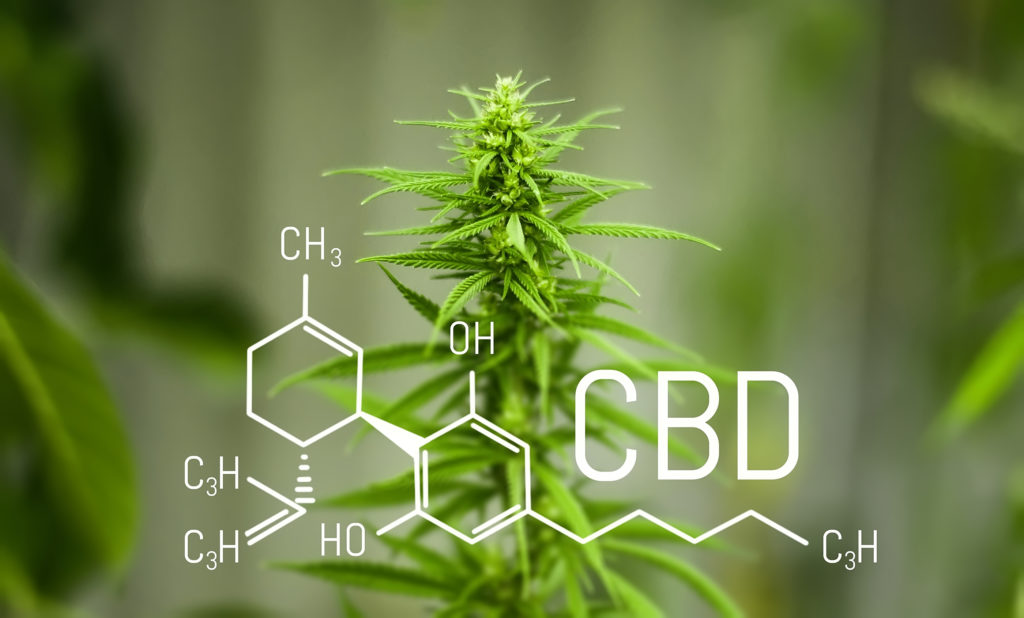CBG Flower Will Be The Next CBD Craze
CBG Hemp Flower Will Be The Next CBD Craze. Here’s Why….
The marijuana legalization and decriminalization efforts that have spread across the country in the last few years obviously marked the beginning of a profoundly new federal and state attitude toward cannabis and top-shelf cannabis and hemp products. It also triggered a golden age in commercial innovation, experimentation, and entrepreneurship, showcased by the present ability to easily buy CBD hemp full-spectrum distillate online, something that would have been inconceivable a few decades ago.
Before the last decade, only the most die-hard cannabis activists and scientists knew the full spectrum of cannabinoids present in hemp plants. They were largely restricted from medical experiments showing the effects of these cannabinoids. Now we know that not only are there a plethora of cannabinoids other than THC, but these compounds are fundamentally different (non-psychoactive) and may have incredibly beneficial health effects.
Non-psychoactive hemp flower cannabinoids on the rise
In recent years, the cannabinoid known as Cannabidiol (CBD) has experienced a meteoric rise in popularity. Many people use CBD flower and CBD extracts for pain relief; others use it to relieve the symptoms of anxiety, PTSD, or depression. Because CBD is not psychoactive it is considered more medicinal in nature, as opposed to the more recreational uses of THC. CBD is also increasingly being used by regular marijuana users to counteract or dull some of the paranoia and anxiety associated with getting too “stoned” on psychoactive strains.
The new golden age of cannabis and hemp has ushered in other rising stars in the cannabinoid ecosystem, namely Cannabinol (CBN) and Cannabigerol (CBG). While CBN is not well known, it was actually the very first cannabinoid isolated by scientists (in the 19th century) and identified (in the 1930s).
Patients say CBN helps significantly with anxiety, insomnia, and other physiological ailments. Medical studies have routinely backed up these claims, demonstrating evidence that the cannabinoid can stimulate appetite, reduce tension (and possibly the symptoms of glaucoma), and act as an effective anticonvulsant.
CBG hemp flower
CBG, which has remained largely unknown to even regular marijuana users, seems to finally be earning its moment in the spotlight. Sometimes referred to as the “mother of all cannabinoids,” CBG is the first cannabinoid acid that arises when a hemp plant begins to develop (making it something like a stem cell in function). Additionally, this CBGA (cannabigerolic acid) later acts as the parent cannabinoid acid that helps synthesize all the others.
Scientists isolated CBG back in the 1960s but it has remained obscure in the decades since, primarily because of how difficult it is to break down into pure CBG form. It is much more common for it to be synthesized into other cannabinoids. The majority of hemp flower strains are only about 2% or less of CBG. Pure CBG, at least until fairly recently, has been somewhat rare.
In addition to its molecular challenges, CBG must also be harvested two weeks earlier than the rest of the hemp plant.
Despite these difficulties, however, many proprietors and cannabis experts believe we are on the cusp of a major CBG boom due to the way the cannabinoid affects the body’s natural systems and its naturally low levels of THC.
Unlike other cannabinoids, CBG does not interface primarily with your body’s endocannabinoid system (yes, this is a real system in the body that was only recently confirmed). CBG works directly on the brain – with your CB1 and CB2 receptors, specifically.
The only other main cannabinoid that does this is THC itself, which is why researchers believe CBG is such a powerful and effective cannabinoid for its beneficial effects and counteracting the psychological anxiety and nausea sometimes produced by regular marijuana consumption.
The Benefits of CBG Hemp Flower
Considering how difficult and expensive it is to isolate pure CBG (estimated to be around $45 per gram), it is somewhat surprising how consumers have taken to this once-unknown cannabinoid. Now the market is full of not only CBD distillate but CBG products, from CBG hemp flower strains, edibles, and oils to toothpaste, face creams, and more.
It’s also worth repeating that CBG contains a very low amount of THC – meaning people aren’t getting “high” off these products. The reason for this surge likely owes a great deal to the medical and scientific research conducted mostly this century, which, like CBD, links a number of beneficial therapeutic uses to the “mother of all cannabinoids.”
~Clinical trials have shown CBG is an effective treatment for stress and mood problems.
In a 2006 paper entitled “A cannabigerol extract alters behavioral despair in an animal model of depression,” clinical trials showed that CBG reduced depression in rats. While such a study has not (yet) tested humans, a 2010 study showed that CBG moderates 5-HT (1A) serotonin receptors. An earlier study showed that CBG helps to free up GABA, which affects anxiety.
~CBG may protect against neurodegenerative diseases.
A 2015 paper explored the effects of CBG on mice with Huntington’s disease and found that the cannabinoid acts as a “neuroprotectant” that repairs damaged brain cells and thus has the potential to fight against neurodegenerative diseases
~CBG may be able to treat drug-resistant bacteria.
Both CBD and CBG have demonstrated the ability to fend off fungus. CBG has also shown particularly strong potential as an antimicrobial. In a 2008 paper, scientists documented CBG effectively fighting methicillin-resistant Staphylococcus aureus (MRSA).
~CBG may help to slow the growth of cancer cells in tumors.
Scientists are appropriately careful when describing a medicine’s effect on cancer. Marijuana in particular has been invoked many times over the years when discussing alternative treatments for tumors. While any and all cancer treatments should be thoroughly discussed with a doctor, there are legitimate reasons to believe that several cannabinoids, CBD and CBG included, really do fight cancer cells.
In a 2009 study, researchers concluded that CBG and other cannabinoids displayed “anti-proliferative/pro-apoptotic effects” against breast cancer, prostate cancer, and colorectal cancer. A 2014 study provided additional data suggesting CBG can fight colon cancer.
Moving forward
More and more people claim that by combining two or three cannabinoids – for example, CBD, CBG, and THC – you not only reduce the anxiety sometimes produced by THC but you strengthen the overall beneficial effects of all three cannabinoids, a phenomenon called the “entourage effect,” which is often associated with full-spectrum cannabis blends.
The movie Half Baked comes to mind, in which Jon Stewart (referred to by the narrator, Dave Chappelle, as an “enhancement smoker”) keeps asking if they’ve done something “on weed.” In this case, the question wouldn’t be “Hey man, did you ever see the back of a twenty-dollar bill….on weed?” Rather, it would be “Have you ever experienced the therapeutic benefits of cannabinoids….on weed??” Kind of cheesy, we know (but that twenty-dollar bill is pretty trippy).
Such a scene viewed now in retrospect also helps to show the evolution of cannabis in our society, from a taboo and cartoonish joke to now a viable vessel for long-term medical treatment. And while there are still plenty of regulations and red tape holding back proper marijuana research, the decriminalization movement has, in the last decade, opened up the doors to easier, less expensive, and more productive scientific research on the medical benefits of hemp plants and cannabis.

